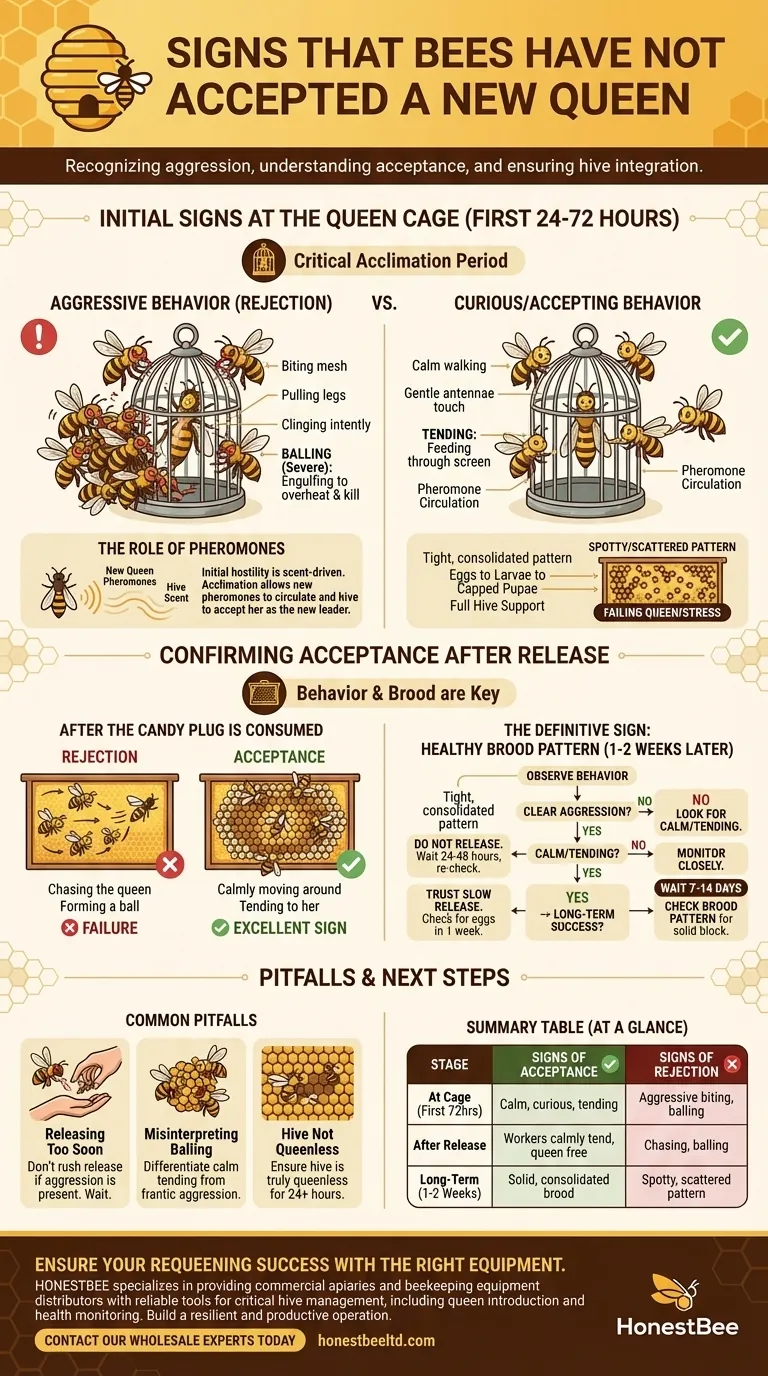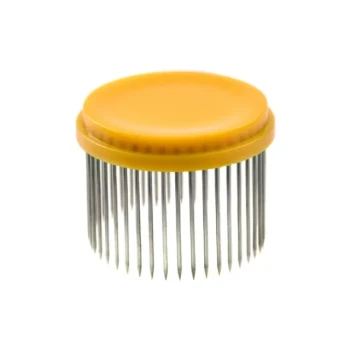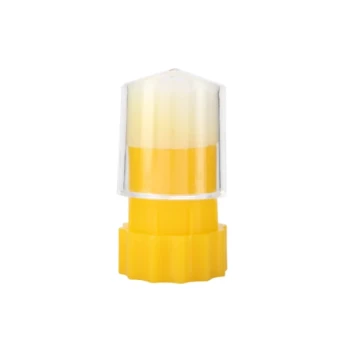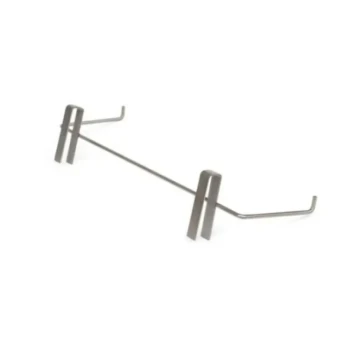The most immediate signs of queen rejection are aggressive physical actions directed at the queen cage. When you check on the new queen, you may see worker bees biting at the wire mesh, pulling at her legs, or clinging to the cage with agitated intensity. The most severe sign is "balling," where a large group of bees engulfs the queen in a tight ball to overheat and kill her.
Successful queen acceptance is a two-stage process. It's not just about the queen's survival upon release; it's about the colony fully integrating her, which is only confirmed when you see her establishing a healthy and consistent brood pattern.

Reading the Initial Signs at the Queen Cage
The first 24-72 hours after introducing a new queen are critical. The behavior of the worker bees on the outside of her introduction cage will tell you everything you need to know about their willingness to accept her.
Aggressive vs. Curious Behavior
Hostile bees view the new queen as a foreign invader. You will see them biting the cage, flaring their mandibles, and attempting to sting her through the mesh. The most dangerous sign is balling, where they form a tight cluster around the cage to kill her. If you gently brush the bees off the cage and they immediately fly back and latch on aggressively, they have not accepted her.
In contrast, an accepting hive will show curiosity. Worker bees may walk calmly on the cage, gently touching the queen with their antennae. They may even be seen trying to feed her through the screen, a behavior known as tending. This is a clear sign that they are beginning to accept her.
The Role of Pheromones
This initial behavior is driven by scent. A new queen has unfamiliar pheromones and a body odor that the hive does not recognize. The acclimation period inside the cage allows her scent to circulate throughout the hive while the colony's original queen pheromones dissipate. This gradual introduction convinces the worker bees to accept her as their new leader.
Assessing Acceptance After the Queen is Released
Surviving the introduction is only the first step. True acceptance is demonstrated by the hive's behavior after the queen is free and moving among the colony.
The First Few Days of Freedom
Once the candy plug is consumed and the queen is released, a quick inspection can be revealing. Look for her on a frame. If the workers are calmly moving around her and tending to her, this is an excellent sign. If you see them chasing her or forming a ball around her, the introduction has failed.
The Definitive Sign: A Healthy Brood Pattern
The ultimate proof of successful requeening is found by inspecting the brood frames one to two weeks after her release. A well-accepted and productive queen will create a tight, consolidated brood pattern.
You should see frames with nearly every cell filled in a solid block, progressing from eggs to larvae to capped pupae. This demonstrates that the worker bees are supporting her, feeding her larvae, and have fully integrated her into the colony's life cycle. A spotty or scattered pattern can indicate a failing queen or continued low-level stress and rejection by the hive.
Understanding the Common Pitfalls
Requeening is a delicate process, and missteps can easily lead to the loss of a valuable queen. Understanding why rejections happen is key to preventing them.
Releasing the Queen Too Soon
The slow-release method using a candy plug is designed for a reason. Manually releasing a queen before the bees are showing clear signs of acceptance is one of the most common and fatal mistakes. If you observe aggressive behavior at the cage, it is better to leave the hive undisturbed for another day or two to allow more time for acclimation.
Misinterpreting a Cluster for "Balling"
A small group of bees on the cage is not always a sign of aggression. A calm cluster of bees tending to the queen can be mistaken for a ball by an anxious beekeeper. The key differentiator is their behavior—is it frantic and aggressive, or is it calm and nurturing?
Introducing to a Hive That Isn't Ready
A hive will aggressively reject a new queen if it doesn't believe it needs one. This happens if the colony is not truly queenless. There might be a hidden virgin queen or even laying workers present. Ensuring the hive has been queenless for at least 24 hours is a critical prerequisite for introduction.
How to Proceed Based on Your Observations
Your next steps should be guided entirely by the behavior you see in the hive.
- If your primary focus is dealing with clear aggression: Do not release the queen. Close the hive and give the colony another 24-48 hours to acclimate to her scent before checking again.
- If your primary focus is confirming initial acceptance: Look for calm, curious behavior and bees tending to the queen through the cage, then trust the slow-release process and check for eggs in about a week.
- If your primary focus is verifying long-term success: Wait 7-14 days after her release and look for a dense, healthy brood pattern as the definitive sign that she is performing her role effectively.
A patient and observant approach to requeening is the foundation of a resilient and productive hive.
Summary Table:
| Stage | Signs of Acceptance | Signs of Rejection |
|---|---|---|
| At the Cage (First 72hrs) | Calm, curious bees; tending/feeding through mesh | Aggressive biting; balling; clinging to cage |
| After Release | Workers calmly move around queen; she is free and active | Chasing; balling after release |
| Long-Term (1-2 Weeks) | Solid, consolidated brood pattern with eggs, larvae, capped brood | Spotty, scattered, or poor brood pattern |
Ensure your requeening success with the right equipment.
A successful hive starts with a well-accepted queen and is supported by high-quality, durable supplies. HONESTBEE specializes in providing commercial apiaries and beekeeping equipment distributors with the reliable tools needed for critical hive management tasks like queen introduction and health monitoring.
Let us help you build a more resilient and productive operation. Contact our wholesale experts today to discuss your apiary's needs.
Visual Guide

Related Products
- JZBZ Langstroth Queen Rearing Frame for Beekeeping
- Professional Queen Catcher and Introduction Queen Cage
- Clear Black Plain Polystyrene Queen Bee Grafting Cell Cups No Lug for Bee Queen Cup
- Professional Round Push-In Queen Cage with Metal Tines
- Stainless Steel Queen Grafting Tool for Beekeeping and Bee Queen Grafting
People Also Ask
- What is the purpose of queen rearing frames? Master Controlled Queen Production for Your Apiary
- How do you prepare the frame for the Queen Rearing kit? Boost Queen Acceptance & Larval Quality
- How long does it take for a virgin queen to mate and start laying eggs? A Beekeeper's Timeline Guide
- Why is it difficult to purchase queens during the production season? The Seasonal Demand Spike Explained
- What do queen rearers do with queens that fail to lay on time? The Critical Quality Control Decision



















